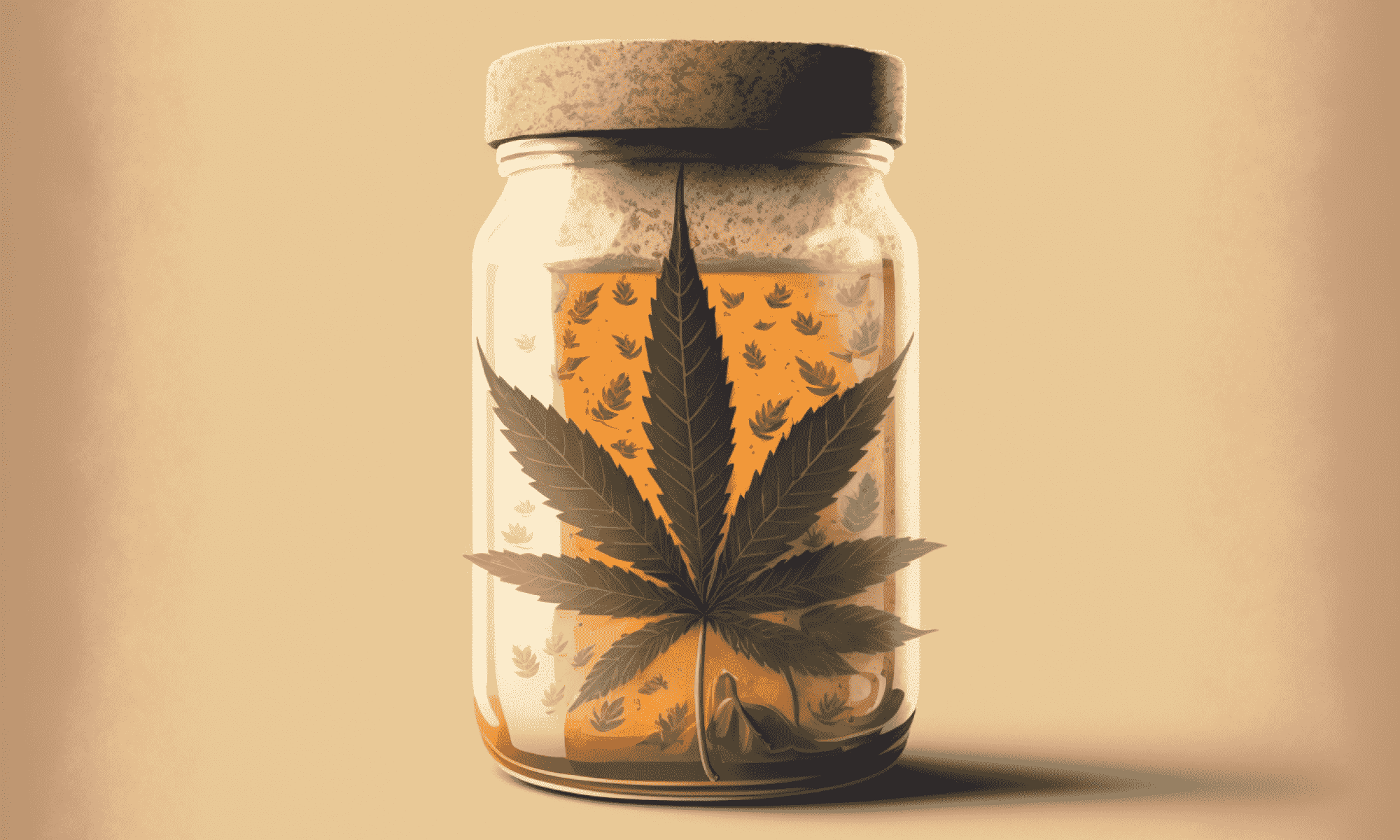Whether chewing on 'edibles' or 'gummies', applying an oil extract to the skin or smoking weed, cannabis use has become very popular and widespread in recent years. More and more people are seeking its associated health and therapeutic benefits.
CBD and THC are the two main types of cannabinoids—the compounds found within the cannabis plant—and the most well-known cannabinoids for medicinal and recreational use. Growing the plant is a surefire way to obtain these cannabinoids, and the cannabis cultivation industry has steadily increased in response to the legalisation of cannabis in several parts of the world. But is cannabis cultivation really the best way forward—and how environmentally friendly is that process? While the hippies of the 1960s might have had us believe otherwise, marijuana isn’t actually as clean or green as it seems. Contrary to popular belief, cultivating cannabis often requires a huge amount of water, electricity (if grown in a greenhouse), fertiliser and pesticides.
In countries where cannabis is legal, scientists and biotechnology companies are circumventing this problem. They have discovered a new way to produce THC and CBD, along with other cannabinoids. Yeast—the perfect microbe for the job—is being used to genetically engineer these same compounds in a more environmentally friendly way. This process is also more efficient, precise and cost-effective than plant cultivation—and all without jeopardising the quality of the compounds.
CBD, THC and the endocannabinoid system
What exactly are CBD and THC? As mentioned, CBD and THC are two of the most common cannabinoids out of the total 80-100 found within the cannabis sativa plant. CBD (or cannabidiol) is a non-psychoactive cannabinoid, which means that it will generally not cause any mind-altering effects. THC (or tetrahydrocannabinol), on the other hand, is the main psychoactive cannabinoid found in the cannabis sativa plant, which means that a user experiences the sensation of getting high—the feeling commonly associated with smoking weed.
CBD and THC have been regarded as useful in treating health issues such as epilepsy, the nausea and vomiting associated with cancer treatment (i.e. chemotherapy), or the loss of appetite and weight loss associated with HIV/AIDS.
It is not entirely clear exactly how cannabinoids work inside the human body; however, scientists do know that both THC and CBD have an effect on what is known as the endocannabinoid system. This system contains cannabinoid receptors, known as CB1 and CB2. Research is still ongoing to understand this complex system, but scientists are aware that the endocannabinoid system is associated with processes including memory, appetite, sleep, mood and fertility. When THC is used, it can bind to both CB1 and CB2 receptors, which means it can then have a range of effects on the body and mind. With CBD, the research is less clear on how it interacts with a person's endocannabinoid system.
The U.S. Food and Drug Administration (FDA) has approved three drugs which contain CBD and THC. Epidiolex (containing CBD) has been approved by the FDA for the treatment of seizures associated with Lennox-Gastaut Syndrome or Dravet Syndrome, two rare and severe forms of epilepsy. In addition, Marinol and Syndros (both containing THC) have been approved for the treatment of nausea associated with cancer chemotherapy, and anorexia which is associated with weight loss in AIDS patients.
Outside of these health conditions, some also believe that CBD and THC can help relieve symptoms of various other ailments, including chronic pain and mental health conditions. There are companies selling products containing CBD and THC on the basis of unsubstantiated claims that cannabinoids can treat anything from cancer to Alzheimer's disease. Consumers should approach such claims with caution and not expect CBD oils or THC supplements to be magical fix-all potions.
Creating cannabinoids from genetically engineered yeast
In response to the cannabis legalisation era and the resulting demand for cannabinoids, a handful of biotechnology companies have taken the initiative to produce cannabinoids on an industrial scale, using genetically engineered microbes. At its simplest, this genetic engineering process involves transferring the genes from the cannabis plant into the microbe, and feeding the microbe to produce either CBD or THC. Different microbes can be used, but California-based Demetrix and Montreal-based Hyasynth are two players in this arena who have picked yeast as their microbe of choice for cannabinoid production.
In early 2019, researchers from the University of California (UC), Berkeley, released a paper in Nature regarding their success in genetically engineering yeast to produce THC and CBD. They discovered that this was a very cost-effective way to produce pure cannabinoids, as opposed to growing marijuana. Leading this group of researchers was Jay Keasling, UC Berkeley professor of chemical and biomolecular engineering and bioengineering.
Jay Keasling also co-founded Demetrix in 2015. The biotech company has previously raised significant funds for the production of CBD and THC, and is pioneering the research and production of other rare cannabinoids such as cannabigerol (CBG). Like THC and CBD, there is research around the various health benefits of CBG, and Demetrix recently announced the initiation of their 2022 commercial manufacturing campaign to support sales of CBG.
When discussing the genetic engineering process, Keasling notes, “Anything that's produced by a plant, one should be able to produce in a microbe, because it is a natural product. But some are more complicated than others, and getting the pathway from the plant and putting it into a microbe can be more or less challenging, depending on what you want to produce.”
Another trailblazer in this field, Hyasynth, was the first company to make a sale of CBD produced in this way. At present, Hyasynth focuses on producing CBD only, in its purest form, without any trace of THC. Kevin Chen, CEO and co-founder of Hyasynth, explains that the Montreal-based biotechnology company was founded in 2014, around the same time that Canada was legalising cannabis. In the midst of that, he and his co-founders decided to utilise their genetic engineering skills in this arena, rather than go down the traditional cannabis cultivation route. “It obviously made a lot more sense for us to engineer yeast... even though lots of other people started companies that were growing cannabis plants.”
As of December 2021, Organigram Holdings Inc invested a further 2.5 million CAD (on top of their 7.5 million CAD to date) into Hyasynth. The investment enabled Hyasynth to launch large-scale production with commercial partners, increase production scalability, and expand their work to other rare cannabinoids. Within the last year, Hyasynth has also reached an exciting technological milestone in that the yield of their genetic engineering process is comparable with that of the cannabis plant. Chen can now hold up a small bag of weed in one hand, and a bottle (of around 500 millilitres) of yeast in the other, knowing that the two are the same in terms of their CBD content.
Genetic engineering as an environmentally friendly alternative to cannabis cultivation
Given the prevalence of CBD and THC usage and its health benefits, the need to produce it on an industrial scale is more significant than ever. And because there are many thriving facilities growing cannabis, the enormous environmental impact of these practices also needs attention.
How significant is this energy consumption? Researchers have noted that while the legalisation of cannabis has led to increased commercial production, the environmental impact has not been completely quantified yet. Nevertheless, recent research forecasts cannabis spending to be more than 63 billion USD by 2024—and as cannabis production increases, the impact on the environment is bound to be exacerbated.
Chen outlines that the uptake of CBD and THC is likely to continue to increase, especially as people become more aware of the human health benefits of CBD. There will be a need for supply to meet that demand. If people are to reap the health benefits of CBD, the planet needs to be preserved from unnecessary threats. Genetically engineering yeast to produce these same compounds can help alleviate the burden on the environment.
Growing cannabis on an industrial scale tends to require large quantities of water, electricity, fertiliser and pesticides. Chen notes that most cultivation will take place indoors. For cannabis plants to yield sufficient quantities, a raft of factors need to be at an optimal level. This includes the humidity of the room, the water and nutrients that are fed to the plant, and the strength and cycles of the lighting. It is this high-demand environment that makes cannabis cultivation hugely reliant on energy. As Keasling notes, “Growing the plant in fields takes water. If you grow it in a greenhouse it takes electricity—and that also takes an expensive facility.”
Comparing this to genetic engineering, Chen notes that cannabinoid fermentation generally only requires a steel tank filled with water, sugar, air and anything else that the yeast needs to grow. The steel tank contains a motor, and the temperature can be easily managed with different kinds of heating and cooling liquids. As well, Chen explains, the process only takes about one week, as opposed to three months with a cannabis plant. He also notes that there is no need for special lights or other high-powered equipment.
As Keasling offers, the fermentation process “in general has a lower footprint in terms of land, water and carbon use.”
Apart from being kinder to the environment, creating CBD and THC through genetically engineered yeast is also more cost-effective, efficient and reliable compared to conventional methods of growing cannabis plants in greenhouses or fields.
THC and CBD can also be produced on a much larger scale by this method. Because it does not depend on environmental uncertainties like weather or pests, the product is more consistent. As Chen points out, “Cannabis plants don't just grow consistently with the exact same chemical composition. You have to do a lot of work to maintain that.” He explains that it does not make a lot of sense to continue using cannabis cultivation as the main supply chain for such important health ingredients when there is an alternative (such as bio-manufacturing) that can offer better precision and certainty in its output.
Climate change is an additional factor to consider, and it will likely become more of an issue as we head into the future. Because cannabis cultivation needs optimal conditions, the climate emergency adds a further layer of complexity to an already challenging landscape. Keasling asserts, “As the climates are changing, places that could grow [cannabis plants] might become challeng[ed].” Whether this means that all cannabis plant cultivation will be done indoors in future (meaning even greater energy consumption) is yet to be seen.
Why yeast?
Any micro-organism can be used to genetically engineer CBD and THC, so why have these biotech companies opted for yeast as their host of choice?
According to Keasling, yeast is extremely well known and generally regarded as safe. In addition, he notes that yeast is a eukaryotic organism, in the same way that a plant is. “That means it has a nucleus, a membrane around its DNA, and it has a lot of the same organelles that [a] plant might have,” he explains. In his research, Keasling and his team have worked with bacteria in the same way but without as much success. He explains, “Bacteria don't have the same organelles that yeast and plants do and as a result, you can sometimes produce your product but sometimes you can't, or it takes a lot more work.”
Chen has a similar view of yeast, stating that Hyasynth uses it because “yeast is a great system. It's easy to grow, it's easy for people who have fermentation facilities already . . . [Y]east is just the best host organism for this particular type of pathway.”
If it's made in a lab, does that mean it's less natural than weed?
Most current users of CBD and THC will acquire it through the cannabis plant itself, or by using a product that comes directly from a cannabis plant. Given this, some might argue that the creation of THC and CBD in a lab makes it artificial or less natural because it's no longer in plant form. There is a general distrust of genetically modified products, and this is likely to be no different for something like weed.
However, genetic engineering offers a level of control and precision which enables CBD and THC to be produced in their purest forms, and helps prevent contaminants from finding their way into the production process. This means you are actually left with a purer, higher-quality cannabinoid than that derived from a cannabis plant. “You want to know that it's got almost no contaminants, and you want to know what those contaminants are—and so in that sense, the microbial production where you're producing only that specific molecule is very powerful,” says Keasling. Contaminants include those that might enter through the environment, pesticides, herbicides and any other elements introduced during the cultivation process.
CBD and THC produced from genetically engineered yeast are still products of the cannabis plant. Cannabis genes are transferred into yeast: they come from the same origin and produce the same compounds through a different process. As Chen says, “You could get that same level of purity from a plant, but it would take a lot more work. Whereas accessing the naturally occurring compound [is] easy. So in the end is there something unnatural about that? Not really.”
What Hyasynth and Demetrix are doing has a multitude of benefits compared to traditional cannabis cultivation. More significantly, their work paves the way for a more environmentally friendly future for cannabis production, while retaining the same quality of product. Ultimately, it means that users can continue to reap the health and recreational benefits they seek from CBD, THC and other cannabinoids, without fear of negatively impacting the world around them. This innovative process of producing these cannabinoids through genetically engineered yeast has changed the cannabis production landscape forever. As Chen anticipates, in the not-so-distant future, the answer to the question 'where does CBD or THC come from?' will no longer be weed, but instead, yeast.







